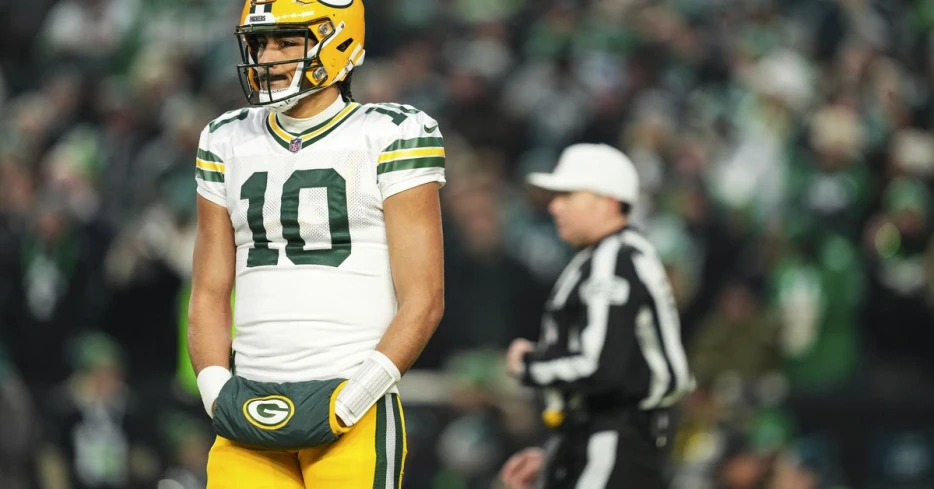
 Acme Packing Company
Acme Packing Company
The season may be over, but Love’s three interceptions reveal very important context for the immediate future.
The Green Bay Packers' season ended in the wildcard round, and the offense could only muster up 10 points in a 22-10 loss to the Eagles. This was a rematch of the Week 1 game that started the season. The Packers entered the game as the seventh seed with a chance to make some noise against a strong Eagles defense, but that didn’t quite happen. But this is old news.
At the center of the loss are Jordan Love’s three interceptions and what that means for him as an NFL quarterback. What began as a promising start to a hopefully long Packers career when he signed a new four-year, $220 million deal ended with a performance that will give his critics plenty of ammo.
Earlier in the regular season, I wrote about how his three-interception performance versus Minnesota deserved further discussion in how we talk about quarterback turnovers and why context matters. The wildcard game interceptions are no exception here, especially after getting some insight and details about what head coach Matt LaFleur and Jordan Love both saw on the turnovers.
As fans, our first instinct is to analyze the result and work backward to the conclusion, without really considering what else is going on in the play, the other non-quarterback player responsibilities, or the coaching points. None of us are privy to that last point unless the coach or player clues us in. Three turnovers? He must have been AWFUL. But that’s not always the case. At least not how the Packers view it.
Love’s first interception came early in the 2nd quarter on a go route to Dontayvion Wicks on the outside. He was 1-on-1 versus Darius Slay on the right as the Packers motioned to a 4-strong ballon swing concept.
The play call is a 4x1 dagger/balloon concept. The progression on all of these is single receiver side to 4-strong side. The receiver/tight end combination route on the left is a dagger/thru route concept with a balloon swing behind it as the late checkdown. The quarterback checks the single-receiver matchup and progresses from there.
The Eagles’ defense was in a base 3-4 structure playing cover-6 coverage with safety rotation to the designated receiver (cover-2 bracket to Romeo Doubs).
In the video, it looks as if Love under-threw the pass and let it hang too far inside. Slay sling-shotted inside of Wicks with a nice move and undercut the pass.
Was this a bad throw? Perhaps. But Love isn’t totally at fault here. At least according to LaFleur, it wasn’t entirely his fault.
In his post-game comments, LaFleur referenced “stacking” the receiver. Stacking occurs as soon as the receiver beats the cornerback and is when the receiver steals back leverage by placing the defender directly behind him. This makes it easier for the quarterback to hit his landmark in front of the receiver and makes it easier for...